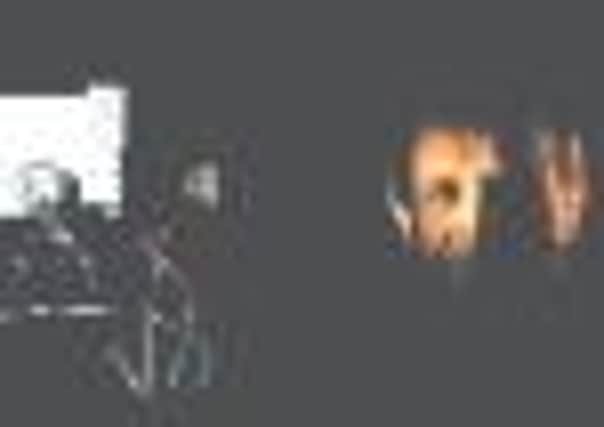Scots the leading lights in race for new wi-fi


Laboratory experiments were conducted using an LED bulb in an angle-poise lamp, which used the team’s patented technology to successfully transmit data to a computer along the visible light spectrum, which is free and less crowded than other frequencies.
Gordon Povey, chief executive of the spin-off company, Visible Light Communications, said that with space running out on the radio spectrum, used by wi-fi, alternatives have to be found before the overloaded system grinds to halt.
Advertisement
Hide AdAdvertisement
Hide Ad“Every year we transmit twice as much data as we did the year before,” said Povey. “Demand is outstripping supply and visible light is the only safe part of the spectrum left to use.”
Povey compared the process of transmitting data via a light bulb to the rapid flicking on and off of a light. “Or more like turning a dimmer switch up and down really fast,” he said. “It only works with LED [light-emitting diode] lights because you can vary the intensity of the light to transmit a sequence of data. It is an off-the-shelf product but we really believe it is a game changer.”
At some point in the future, Povey envisages people being able to plug in a semiconductor light bulb adapted to run data from computers, laptops, smart phones, games consoles, MP3s, televisions and even the car. VLC/D-Light precludes the need for a radio device or an antenna.
“The significance of this is potentially huge,” he said. “It is safe and the visible light spectrum has 10,000 times as much space as the radio and microwave spectrums combined.”
The Edinburgh scientists believe their technology can deliver data transfer rates in excess of 100 megabits per second – twice the speed of wireless local area networks and existing superfast broadband. Unlike radio frequencies, LED light frequency does not suffer from electromagnetic interference – known as “electrosmog” – which makes it an attractive option for use in hospitals or for in-flight entertainment on aeroplanes.
The project has already attracted the attention of American venture capitalists who have indicated that they are willing to invest up to £3 million in a first round of funding to boost the low-cost commercial operation on to the international stage.
“They have been contacting us from the States which is unusual, but always a good sign,” said Povey. “They are quite taken with the concept, which is seen as an answer to a heavily congested marketplace when it comes to wireless radio (wi-fi) spectrum applications.”
It is thought the Americans may be interested in the technology because it offers enhanced security. Light waves do not penetrate walls, which makes the signal less likely to be picked up by anyone. This could make it a popular choice for companies working in the security or defence industries.
Advertisement
Hide AdAdvertisement
Hide AdWith LED light bulbs beginning to make inroads into the domestic market, Povey thinks the technology could be widely available in about ten years. “The prediction is that by 2020 the majority of light bulbs in the world will be LED,” he said.
In the ever-changing world of communications, most consumers have barely got their heads round wi-fi.
But Povey says scientists around the world are searching for methods of transmitting data as gridlock on the radio wireless frequencies grows ever closer.
“I know there are people in the United States and in Japan and South Korea working on similar technology. But what we have been able to do is effectively transmit very large amounts of data, using the technology, which shows that it works,” he said.
Ultraviolet and infrared light have already been ruled out as replacements because of the potential health risks of sustained exposure, but visible light has no harmful side-effects. Light bulbs have been used safely since they were invented by Thomas Edison in 1879.
So far the team has begun using its technology for smart lighting – lights that know when to switch themselves off and on – and an indoor navigation system that can track devices around the home.
Early indications of the technology’s potential is the global interest it has attracted. Povey’s colleague, Professor Harald Haas, has been shortlisted for a World Technology Award for his work on the project within the university’s school of electronics and engineering.
The winners will be announced on 26 October at the United Nations in New York. Among Haas’s rivals for the prize are researchers from Bell Labs, Facebook and Yahoo.
Advertisement
Hide AdAdvertisement
Hide AdColleagues in Scotland believe the team stands a good chance of success.
Hugh Gill, director of technology at the award-winning Scottish medical devices firm Touch Bionics, which developed the world’s first commercially available multi-articulating bionic hand, said of VLC/D-Light: “It sounds clever. I think their idea will have many applications, especially when it comes to cross-communications to build networks.On the security front I can see how it would be quite immune to magnetic or radiation interference. I think they’re in for exciting times.”